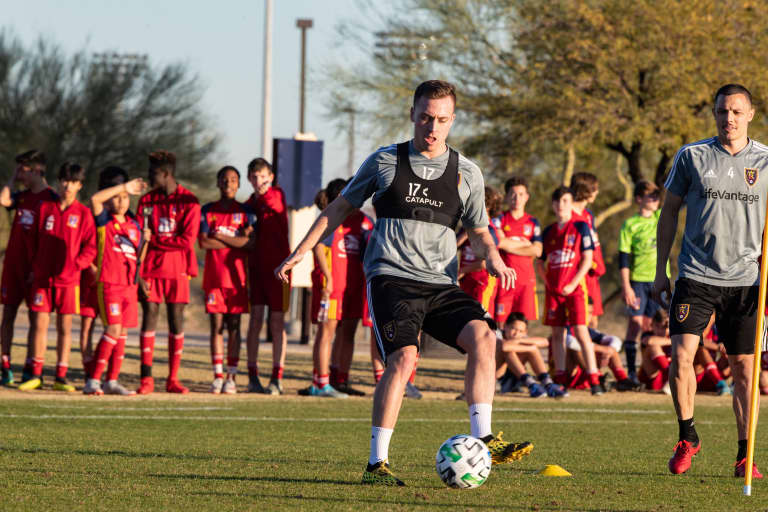Settled into the small city of Herriman, Utah at the base of the Oquirrh Mountain Range sits the Zions Bank Training Center, training home to Real Salt Lake, Real Monarchs SLC and the RSL Academy.
The building is known around Major League Soccer as the most comprehensive soccer training facility in the country and remains the pinnacle for professional soccer development in the United States. But what helps feed the RSL Academy and eventually the Monarchs and the first team, cultivates 648 miles from the entrance to the facility in Herriman.
RSL-Arizona – the club’s most established satellite program – is quickly sweeping the state of Arizona and attracting the attention of players and their families in rapid fashion.
An estimated 15,000 kids from age 4 to 19 represent RSL throughout the state of Arizona and that number shows no signs of subsiding.
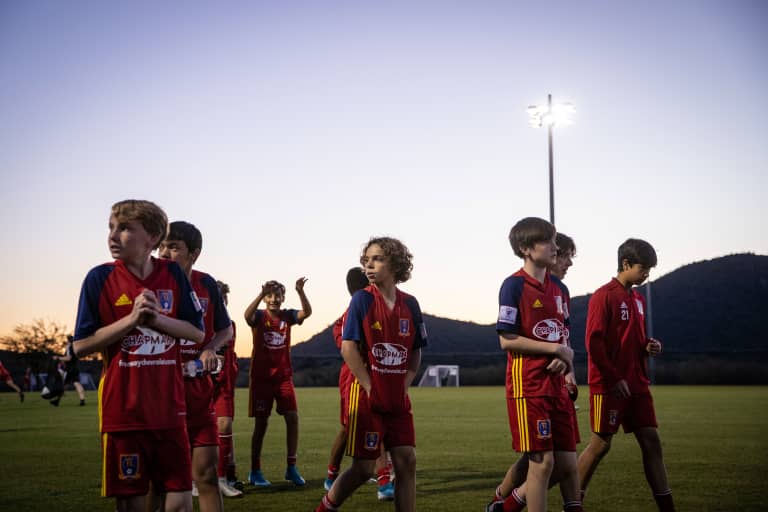
“We’ve had 14 clubs who have unselfishly merged or partnered into the RSL-AZ program,” RSL Academy Director Mike Kraus said. “The main objective of these clubs joining us is to give each individual player a better opportunity. RSL offers many more opportunities than 99% of the clubs in the country. Every club that’s come in realizes and recognizes that RSL is the best place for anyone to be.”
In addition to the U.S. Soccer Development Academy Program and Elite Clubs National League (ECNL) teams that compete at the highest Academy level each season, recreational leagues across the state of Arizona also contribute to the growing number of players that fly under the RSL flag. With several thousand recreation players wearing the RSL-AZ logo, the possibilities to participate at the highest level of soccer is continuing to grow each and every day.
“The RSL brand is so engrained in the Arizona community now that even local soccer stores are having trouble keeping our badges and jerseys in their stores,” Executive Director of RSL-AZ Brent Erwin explained. “It’s been quite incredible to watch and be a part of over the last several years.”
With three professional soccer teams and three Academy contingents in Utah, RSL holds one the most thorough development ladder systems in American soccer since it first opened its doors in 2010. Benefitting the club is the fact that Arizona falls in RSL’s MLS Homegrown territory, so it has the opportunity to scout, develop and utilize talent in Arizona through a long-term planning process.
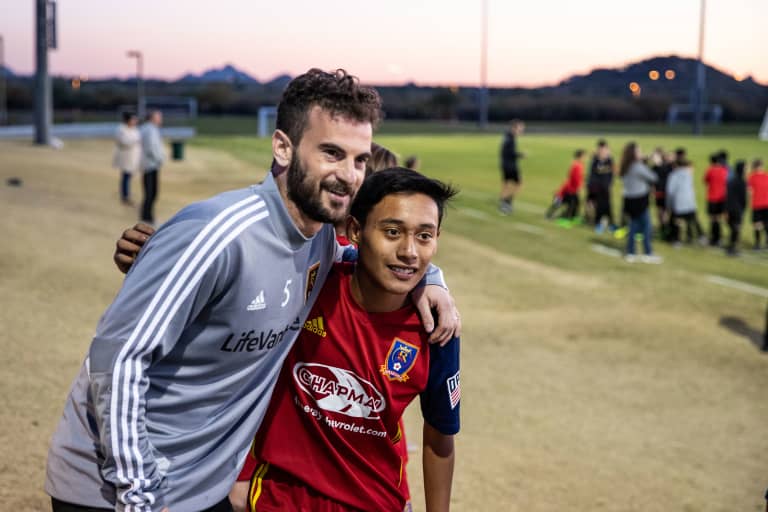
The Path to Herriman
What does the path to Utah from Arizona look like for a player and their family?
With the club’s concrete development ladder in place, the entire organization begins to work together. From Arizona, Kraus and Erwin lead a group of coaches that communicate and work on a regular basis with Utah-based RSL Executive Vice President of Soccer Operations Rob Zarkos, RSL General Manager Elliot Fall and RSL Academy Director Tom Spall and his staff to ensure the principals of the club are being instilled from its satellite location. From the moment they first put on a jersey at five years of age, the players have a plan in place for their development.
“We’re acting constantly with our planning and implementation from the top down so that every kid who begins their soccer career at any age will have the opportunity to play for the first team. That’s our goal,” Erwin said. “As long as these players keep growing and the players that possess a higher skill level for their age, they have the chance to play in older age groups in Arizona and hopefully have the opportunity to move to Utah and play for the Academy under Spall.”
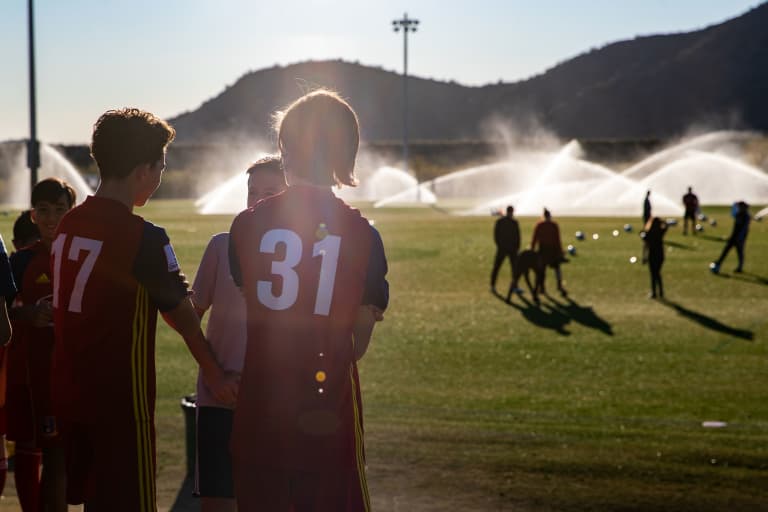
Adding to the firmly established boys Academy groups, RSL-AZ also offers the same opportunities for girls who are seeking to reach the highest possible level of soccer. Together with Utah Royals FC, the girls have a USSDA program in Arizona that works closely with URFC General Manager Stephanie Lee and the coaching staff of Royals FC in Utah.
The Proof is in the Pudding
The club has long been known for its Homegrown stars. In 2018, Corey Baird became the first rookie in RSL history to win the AT&T MLS Rookie of the Year after scoring eight goals and adding five assists in his first professional season. While the honor was the most publicized achievement by an RSL Homegrown in his rookie season the club has been producing young players who regularly contribute for the first team.
When RSL initiated its Academy, it was originally located in Casa Grande, Arizona, before moving up to Herriman in 2018. Since the Academy’s inception the accolades continue to pile on including 54 players that have graduated from the Academy and have moved on to play professionally. RSL Academy products have also accounted for the most minutes played during the MLS regular season over the last two years, totaling 23,100 minutes played.
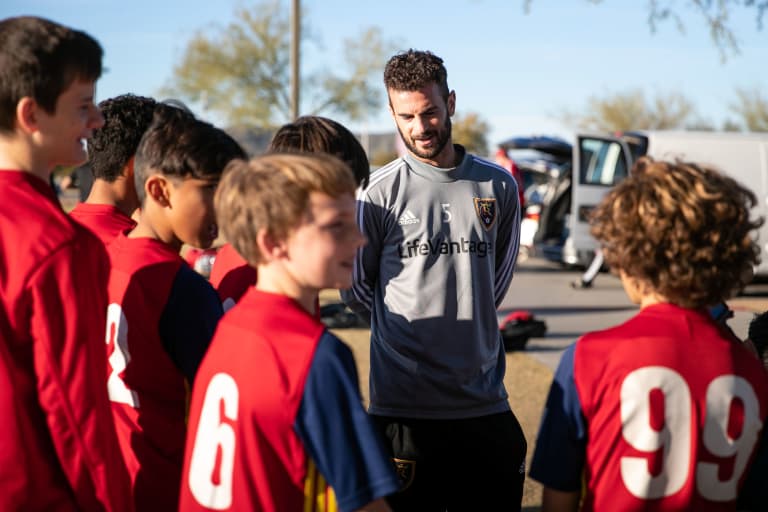
“One of the benefits to evaluating these players as they grow is understanding the benchmarks that have already been set,” explained Kraus, who himself started working with the RSL Academy in 2012 and has seen firsthand the development ladder’s successes. “When these players and coaches understand what the highest level looks like – Baird, Herrera, Schmitt and Glad as examples – then we’re able to show what needs to be done to reach the highest level. We’re then able to show that this system works.”
In Arizona, the kids watch RSL play on television each week but rarely get to see the players they idolize in person. But, during the team’s 2020 preseason, the RSL-AZ players got to watch training from the sideline and meet the players and see how their heroes work and treat one another.
“Our process can be equated to when the pioneers moved West,” Kraus explained. “When we began this project, we knew it would be several years before we really started seeing these young stars contributing on the first team level. The pioneers didn’t know how to get to the West but when you look at Justen Glad – who signed as a Homegrown player when he was 16 – he carried the weight of the process with him and paved the path to the first team. So, when other players are wondering what the process looks like, he is able to say, ‘Follow me. I carved the trail and know what it takes to get there.’ And now that he’s contributing at the highest level, the kids now see the steps that’re needed to get there.”
